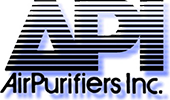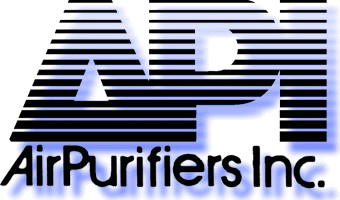Dust Collector Safety
Every day, Air Purifiers, Inc. is helping industries improve their indoor air quality to meet or exceed OSHA standards for the workplace. In addition to standards for air quality, OSHA and the NFPA also provide standards and guidelines for the safe operation of dust collectors.
It is important that every dust collection system, whether existing or new, be evaluated for safety in the handling of the dust.
Potential Hazards
Dust collection systems must be designed with a view to both preventing and suppressing possible explosion and conflagration.
Risk factors include:
- Type of dust – depending on size of particulate and amount of accumulation and concentration, the many potentially explosive dusts include metal dust such as aluminum and magnesium, wood dust, coal and other carbon dusts, plastic dusts, chemical dusts, agricultural dusts, organic dusts such as sugar, flour, paper, and soap, and dust from certain textiles.*
- Dust accumulation and confined dust clouds – accumulated dust on the horizontal surfaces of the shop or plant that potentially can be stirred up, or clouds of smoke and dust from industrial processes confined within a limited space.
- Sources of ignition – sparks from welding, grinding, etc., hot surfaces, vacuum cleaners, lighting fixtures, faulty wiring, defective electrical devices (arcing switches, worn bearings, etc.), heating devices, smoking.
- Ducting – the possibility of accumulated dust within the ductwork and/or propagation of dust explosions or fires to other connected equipment and work areas.
*See OSHA poster on combustible dust for a more extensive list of potentially explosive dusts:
Types of Solutions
A comprehensive approach to minimizing the risk of an explosion or fire includes careful design of the dust collection system and incorporation of safety equipment as needed. Various protective measures include:
- Locating the dust collector outside and/or venting to a safe outside area, or insuring that return air is filtered to 99.9% efficiency
- Source capture hoods to prevent dust migration and build-up
- Grounding equipment to control static electricity
- Separators, spark traps, and drop-out boxes
- Mechanical or chemical isolation devices
- Proper duct sizing and airflow velocity to prevent settling of dust
- Explosion vents and automatic fast-acting dampers
- Spark detector and suppression systems
- Wet dust collectors for combustible metal dust
For help with meeting safety standards for a new or existing dust collection system, please contact Air Purifiers, Inc. for more information or an on-site consultation for your industrial facility. Our air specialists offer the expertise and products needed to help you comply with applicable NFPA/OSHA guidelines and standards.
Resources
- OSHA – Hazard Communication Guidance for Combustible Dusts
- OSHA – Combustible Dust in Industry: Preventing and Mitigating the Effects of Fire & Explosions
- OSHA Fact Sheet (March 2008), Hazard Alert: Combustible Dust Explosions
- OSHA Combustible Dust Poster
- NFPA 654,Standard for the Prevention of Fire and Dust Explosions from the Manufacturing, Processing, and Handling of Combustible Particulate Solids
- NFPA 61, Standard for the Prevention of Fires and Dust Explosions in Agricultural and Food Processing Facilities
- NFPA 68, Standard on Explosion Protection by Deflagration Venting
- NFPA 69, Standard on Explosion Prevention Systems
- NFPA 484, Standard for Combustible Metals
- NFPA 664, Standard for the Prevention of Fires and Explosions in Wood Processing and Woodworking Facilities
To view NFPA standards, see www.nfpa.org.


